On the heels of We Need Diverse Books’ Diversity in SFF panel at BookCon two weeks ago, the second annual Special Edition: NYC also took time to focus on diversity and how it impacts some of the most popular comic book series and graphic novels being published today. The convention did so through three panels: Representation Beyond Characters: How Diversity Bleeds Into Work, #BlackComicsMonth: Diversity in Comics, and Creating Comics: The Real Stories.
I was able to attend Representation Beyond Characters and Creating Comics. The former’s panelists were primarily people of color; the latter was all-female, including several women of color. Both talked about sneaking small but relatable details into worldbuilding, the difference between work-for-hire and creator-owned comics, and how publishers have responded to calls for greater diversity. Though the panels took place at different points during the con, they presented a refreshingly diverse lineup talking about real issues in modern storytelling.
Worldbuilding: Specific Trumps Generic
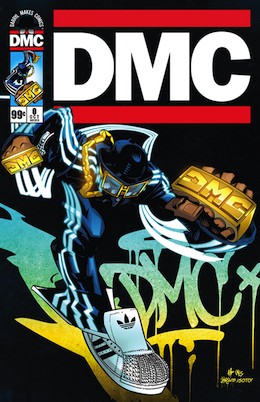 Representation Beyond Characters began small—that is, with tiny details spotted in the panels of comics like DMC. Moderator Daisy Rosario (producer for NPR’s Latino USA) pointed out the container of Café Bustelo sitting on the kitchen counter in one of Darryl “DMC” McDaniels’ comics. If you were Latino and grew up in NYC, she explained, you would have drunk that.
Representation Beyond Characters began small—that is, with tiny details spotted in the panels of comics like DMC. Moderator Daisy Rosario (producer for NPR’s Latino USA) pointed out the container of Café Bustelo sitting on the kitchen counter in one of Darryl “DMC” McDaniels’ comics. If you were Latino and grew up in NYC, she explained, you would have drunk that.
Similarly, Greg Pak (writer for DC Comics’ Batman/Superman and Action Comics) recalled reading about the hair-oiling scene in Spike Lee’s She’s Gotta Have It. Even audiences who did not grow up in the African-American community “understood it in context,” he said. “You understood the emotional intimacy between the characters. [It was a] moment that illuminates the characters, makes them real.”
It might seem counterintuitive to base worldbuilding on such minute moments, but it actually makes the stories more relatable. “If you make it more generic, no one cares as much,” Pak said. “The only ways characters live and breathe is if you give them as much as you can.” Similarly, Edgardo Miranda-Rodriguez, McDaniels’ collaborator on DMC, said that when readers told him, “I see myself in that book,” the character they were referring to was a young woman of color.
“I’m not coming from a place of fantasy,” he said about his process. “I’m coming from a place of reality.” Kim Gaines (Eventide) put it best: “I always try to make people before I make a race.”
Doing Your Research
But how do you do keep from tokenizing diverse characters? It’s a question that the WNDB SFF panel pondered, and Special Edition’s diversity panel had similarly solid advice.
“I think a lot of times writers draw reference from other writers’ works,” Miranda-Rodriguez said. “Other times they reference films.” Instead of looking at narratives, he suggested, look at documentaries. (Pak agreed, also suggesting reading memoirs.)
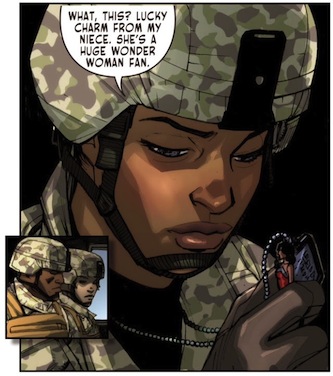
“You need to be super observant about stupid little things,” Amy Chu said, advising that writers watch strangers on the subway, among other things.
Chu discussed the genesis for “Rescue Angel,” her Sensation Comics Wonder Woman story set in Afghanistan: A classmate of hers, a black man, was a pilot in Afghanistan. From there, Chu (who had no background in the military) researched issues of ethnicity, gender, and dress for her protagonist, a Latina combat pilot.
“As a writer, we have the power to do that,” she said. “We don’t have to just go with cookie-cutter [ideas of] what we thought the military was like back then.”
Work-for-Hire vs. Creator-Owned Comics
Chu emphasized that she had the luxury of time in which to research her story. But that’s not often the case when writers and illustrators are work-for-hire, at the mercy of tight deadlines. Artist Alitha Martinez (Batgirl) said, “I find that if the writer didn’t put certain things in, I can’t add much more stuff.” Working under time constraints, artists will revert to certain body types they’ve already learned to draw quickly: “You try so hard to make it correct, you forget to make it diverse.” In her own work, however, “I can slow that process down. I can go back and add all the little touches.”
Martinez and Chu had the chance to work together on a Vertigo story, “So Blue,” set in near-future Detroit. Martinez said she was able to take greater liberty in adding in certain skin types on the characters Chu wrote because “she built a world I can play with.”
“You built the world,” Chu said. “I just gave you the framework, which was easy.”
The disconnect between the two types of work was a common theme for the women on the Creating Comics: The Real Stories panel as well. A big debate was whether their work for licensed properties—among the group was My Little Pony, Adventure Time, Astonishing X-Men, Gotham Academy—constituted fanfiction or canon.
“I had someone get so mad at me for referring to it as fanfiction recently,” said Kate Leth (Adventure Time and the upcoming original comic Power Up). “But I also grew up writing fanfiction and didn’t think it was a bad thing.”
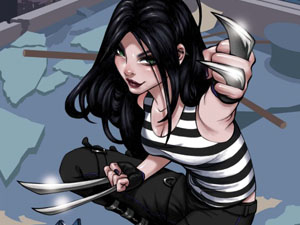 Marjorie Liu, romance novelist-turned-comic book writer, also wrote plenty of fanfiction as a way to refine her writing chops. Talking about working in established universe, including her own work on Wolverine and X-23, she said, “Your job as a writer is to tell a story to flesh out the character and make him real, but a lot of the work has been done for you in terms of the worldbuilding.” When it comes to creator-owned work, however, the burden of worldbuilding is on you. Liu admitted that she did not have an easy transition from Marvel “because I realized I had been relying on this pre-made world, almost as a secondary language, and I didn’t have that anymore.”
Marjorie Liu, romance novelist-turned-comic book writer, also wrote plenty of fanfiction as a way to refine her writing chops. Talking about working in established universe, including her own work on Wolverine and X-23, she said, “Your job as a writer is to tell a story to flesh out the character and make him real, but a lot of the work has been done for you in terms of the worldbuilding.” When it comes to creator-owned work, however, the burden of worldbuilding is on you. Liu admitted that she did not have an easy transition from Marvel “because I realized I had been relying on this pre-made world, almost as a secondary language, and I didn’t have that anymore.”
Leth said that every time she creates a character in a licensed comic, she gets accused of it being her OC (Original Character) self-insert. Katie Cook, who has written the My Little Pony comics for the past few years, actually will get to see a pony version of her in both the comic and the TV show.
With Gotham Academy, Becky Cloonan gets to write a story “steeped in Batman lore,” but she also creates an array of new characters. She referred to it as “creating canon in continuity.”
How Publishers Are Responding to Diversity
Gotham Academy, as well as Annie Wu’s Black Canary, are both new types of books for DC Comics—and so far, the response has been overwhelmingly positive. Cloonan’s first comic was Silver Surfer Annual #1, back in 1988; she remembered thinking, “This is it.” Just as one book changed her life so significantly, she can’t help but think about paying it forward: The thought that Gotham Academy could be a reader’s intro into comics spurs her on to write authentic characters.
Similar to the specific-over-generic discussion in the diversity panel, Wu talked about how “for Black Canary, we try to tap into things that I would personally have loved to see in books, as a reader now, or as a teenager and a kid. I’m trusting that if I follow that instinct, it’ll have a diverse background but also personality, all those little tiny details.” She wants readers to find something in a character (one of which will be “a Grace Jones/David Bowie-type chick”).
This demand for greater diversity in both comic book creators and characters is being acknowledged by publishers. “I think it’s changing because it has to,” Leth said, pointing out that readers and professionals are finding their way to comics much differently than 10-15 years ago. Today, fan art on your Tumblr could get you a job illustrating a comic book, as it did for Marguerite Bennett when she was assembling artists for her new series, Bombshells.
However, Bennett cautions, while people are talking about how inclusive and wonderful it’s going to be in the future, they can’t take it as a given. “While I appreciate the optimism, that’s a trap I don’t want to fall into,” she said. “You have to remember that it takes active participation from every single person to make sure we keep this momentum going. That’s why social media has become so important.”
Diverse Heroes… and Villains?
An interesting audience question that came up during the diversity panel asked how the panelists feel about writing diverse villains that don’t demonize different groups of people as they have in the past.
Pak said that he would love to work on an anthology of diverse villains. “I don’t ever want to have a superhero walk into an alley and there are four black muggers around him,” he said. “That’s not what we mean by diversity.” He added, “I don’t want to write a Fu Manchu Asian villain—I’m not gonna go there—but I will write an Asian villain eventually.”
“We’re working in an era where there’s a full spectrum from human to villain,” Chu said. The heroes of the DMC universe, Miranda-Rodriguez pointed out, wear tracksuits and fedoras, and might look more like villains, with the villains more resembling traditional heroes. “Heroes are only as good as their rogues gallery,” he said.
How Daunting is Diversity?
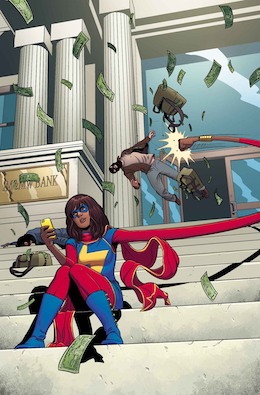 A final point that came up from BookCon’s WNDB panel was whether labeling something as diverse alienates potential readers.
A final point that came up from BookCon’s WNDB panel was whether labeling something as diverse alienates potential readers.
“I think that’s the biggest pile of yellow manure,” Bennett said.
“It’s called cross-identifying,” Leth said. “It’s what everyone who grows up who isn’t represented has to do.”
Cloonan said she hopes that girls who are reading Ms. Marvel now will go on to write and draw their own comics, keeping the momentum going. “Ten years ago,” she said, “this panel wouldn’t have happened.”
Edit: I didn’t have the opportunity to attend the #BlackComicsMonth panel, but you can watch the entire panel in the video below. (Thanks to commenter Beauxknows for finding it!)










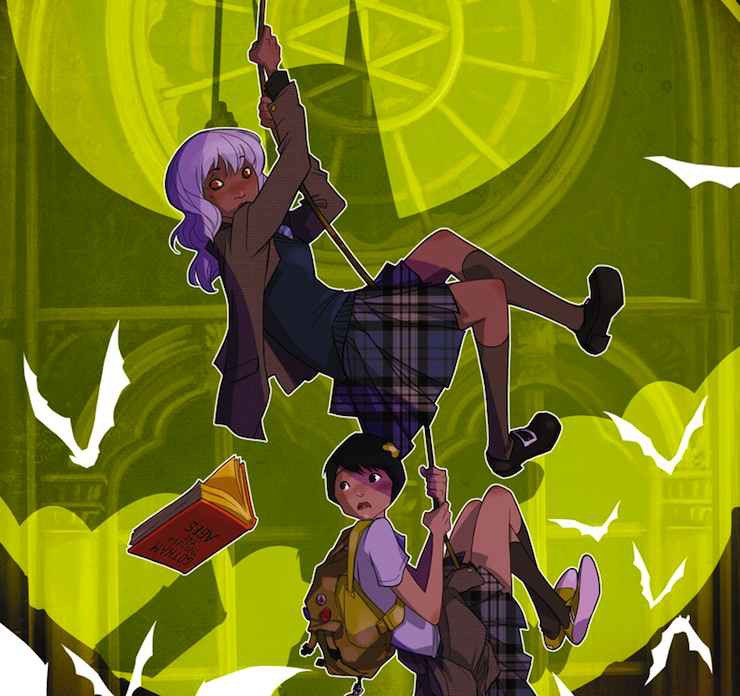

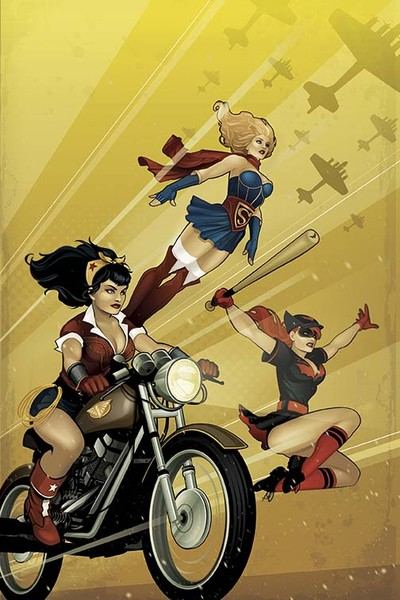
There was another panel at Special Edition NYC that also dealt with diversity. BlackComicsMonth: Diversity in Comics. https://www.youtube.com/watch?v=zvd9JLdBWTA
Thanks for the insider perspective, I would’ve died for an opportunity to listen in to such awesome comic heavyweights! I was thrilled to hear about Black Canary a couple of months ago, and DC is saying the first trade is coming out on June 17, and I can’t wait to get my mitts on it. Also, definitely giving a shout out to Marjorie M. Liu’s Monstress coming out this month, as well as the first Gotham Academy trade. As a comics-loving geeky girl, this month has been kind. Other diversity comic news: Kaptara is getting panned well with a queer protagonist, and Gene Luen Yang is taking over Superman, so we have such great stuff coming up (after reading volume 1 of Storm: Making It Rain, Greg Pak is amazing).
“Diversity in comic books” or any other medium for that matter, is a bad thing to pursue, as mediums are from different people, it’s not an overall organisation who sits down to make sure we have enough native americans, which will always lead to one author being blamed for the overall “lack of diversity”. What’s important to have is diverse characters in terms of character traits and personalities (shy, courageous, prude, snarky etc.) the rest is irrelevant. The result you will see hereafter is an automatic increase in “diversity” since people will somehow be influenced from somewhere, if you are black and don’t know any white people chances are your characters will all be black, which is why I view these panels and calls for diversity to be shallow criticism that can’t be met with any good solutions, because it focuses on telling writers and authors to make sure they have these things instead of just being invested in a story and letting the inspiration come to the person on it’s own, and let these characters identity be automatically defined, it doesn’t matter if the cast of characters is sexually, ethnically, gender etc. diverse if they are empty boring characters with no depth.
This post is oddly apropos.
I am getting irritated with the strawman ‘diverse boring characters’ argument. Obviously there is crappy writing out there (with both diverse and non-diverse casts) and probably some of the stuff that includes diverse characters will be bad. Diversity isn’t in and itself what makes the story good; but more and more I’m finding it hard to find a story really good if its’ not also diverse, if that makes sense. And if a character is empty and boring, that probably is the case regardless of their race or gender; switching from he to she isn’t going to be what makes them boring. I guess to me it’s annoying that there need to be ‘reasons’ for making a character not the default white male, or it needs to be justified. Nobody ever seems to ask why a character is white/male (insert Mean Girls joke).
My husband and I were talking about this last night; of course people want to see themselves represented in their stories (and I also enjoy reading about other types of people in stories). The point of this enterprise is to get those people writing and yeah, maybe some of it will be bad, but there will be enough of it that there will also be good stuff.
@@.-@ anon gg’er, but representation matters a great deal to everyone.
I grew up in Massachusetts and the pride people took in having JFK as president is still enormous. As a boy, I met many people in my hometown who had voted for him. They voted for him ’cause he was from Mass or a democrat or a veteran or of Irish ancestry or a Catholic.
Why would comics be any different? And I think it should go without saying that we all want interesting characters to read and root for, and against. The question asked is, simply, do they always have to be white, straight males?
Saying that we want ‘interesting’ characters is preaching to the choir, isn’t it? None of us will read comics about boring and wooden characters; those with no depth or layers to them. Having them being other than the standard doesn’t somehow preclude them from being interesting.
I did not read anything is this posting that said that everyone picked up their ‘diversity checklist’ as the left so they could make sure they followed the ‘correct path.’
The comics industry is in deep trouble these days. Subscriptions are down & they’ve priced out the next generation of buyers. The big two are writing the same things over and over and over. As a comic book fan from the time of the Storm lost her mutant powers, I don’t want to see them go. My youngest son loves them.
With all that, why would anyone be against bringing new ideas to the table? New people – writers & artists? New fans? New heroes or new takes on old heroes? The superhero movies that are so popular today won’t save the industry from extinction. Injecting the old with new ideas, people, and talent will.
Kato
I’m a fan and reader of the Legend of the Five Rings and that series has characters are 100% Asians. I think diversity would ruin it and ruin the story. I think diversity is often dependent on setting. If a writer’s fiction was based on the historical Vikings for instance it wouldn’t make sense if the setting was in Iceland or Scandinavia to have much diversity there. If the Viking were in Rome or Constantinople then I would expect to see more diversity there. When a writer creates a character you have to create a world that supports it. For instance, I like Thor, and I liked the movie. When I saw Heimdal it didn’t make much sense because he was the only dark skinned Asgardian there. Where are the others. If you know anything about Norse mythology then you know that Heimdal was the father of all the peoples of man. I realize that the movie writers were trying to bring a wider appeal to the audience but I think they didn’t make the stretch believable. He seemed placed there and not naturally there. The actor did a great job though. The movie Heimdal character rocked but I would rather them have shown that diversity in a different way and not the diversity for diversity sake. It would have made better sense if they showed some sort of connection to mythology. The Nordic gods themselves were from several races of gods, had they shown that it would not have been plausible. I share your respect for diversity because in my worldly travels I have come across many cultures and they are fascinating and they have broadened my horizons. Diversity does bring out a sense of awe and wonder to a story. Sometimes a character who is not of the same race or is the sole character of his type makes the character more prominent and focuses the readers attention I think. Respectfully, I just don’t agree that it should be mandatory to put in diversity. Leave it to the writer’s discretion. Empire does not build its storyline with diversity and yet it rocks the house. It is no less entertaining than the Viking series. I think this is a good article on how to do it right though.